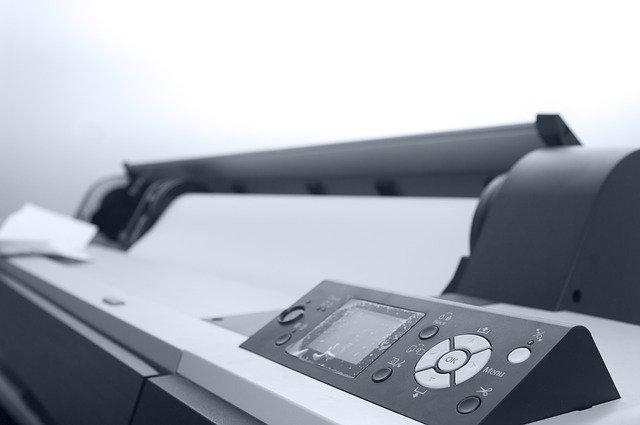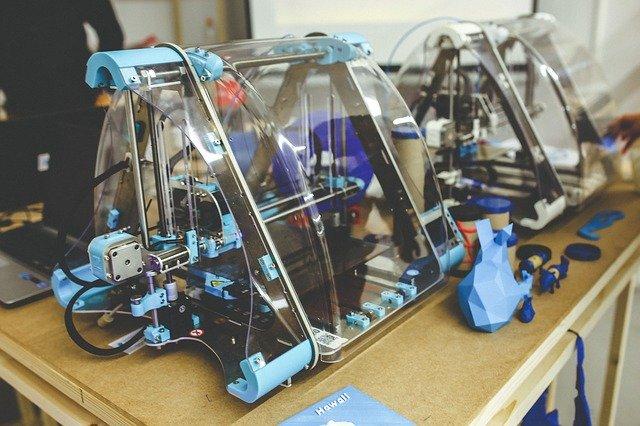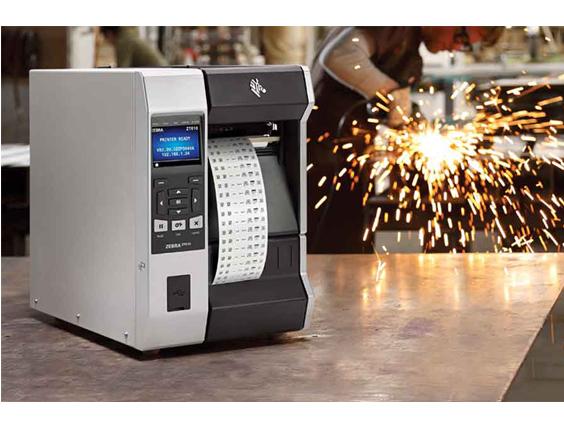Printing, believe it or not, dates back in some form to as early as 3500 BC, when the Persian and Mesopotamian civilisations used cylinder seals to certify documents written in clay. Woodblock printing would follow, then moveable type until we get to the printing press in 1440. Ever since humanity created visual print, there has been ways and techniques for making copies of said print.

However, when we talk about computer printing, we need to start a bit more recently. Computer printing has allowed for incredible innovations and improved processes in industries the world over. Here’s a look at how the first computer printers came to be and how they developed over time.
The First Printer
In computing, printing makes a persistent representation of graphics or text, typically on paper. The first computer printer designed was a mechanically driven apparatus by Charles Babbage for his Difference Engine in the 19th century. The Difference Engine is an automatic mechanical calculator that was invented to produce error-free tables, which was a complicated process to do by hand. However, the printer that was designed for this machine was not actually built until 2000.
The printer was designed 150 years before, but Babbage never got to complete the Difference Engine or the printer. It was completed in 2000 by the Science Museum in London and their completed printer automatically prints the results of a calculation performed by the Difference Engine (also built by the museum by following Babbage’s original blueprints).
The First Electronic Printer
The first electronic printer was the EP-101, created by Japanese company Epson in 1968. It was a tiny printer, only 164 millimetres in width, 102 millimetres in height and 135 millimetres in depth and weighing just 2.5 kilograms.
The printer was created by Epson (Shinshu Seiki Co.) when they were working for Seiko Group, who had just become the official timekeepers for the 1964 Tokyo Olympic games and needed a machine to print out the times they gathered from their timepieces.
Desktop Publishing
The first commercial printers used mechanisms from electric typewriters and Teletype machines. The demand grew for higher speed systems specifically for computer use. The 1980s saw the introduction of the low-cost laser printer in 1984 with the first HP LaserJet. This set off a revolution known as desktop publishing.
Laser printers mixed text and graphics, like dot-matrix printers, but at a quality formerly only available in commercial typesetting systems. By 1990, most printing tasks like brochures were now created on personal computers and then laser printed, replacing offset printing systems. The HP Deskjet of 1988 offered the same advantages as the laser printer but produced somewhat lower quality output. Inkjet systems rapidly displaced dot matrix printers from the market, and by the 2000s, high-quality printers had fallen under the $100 price point and were becoming commonplace.
Printing Today
Email soon came along in the 1990s and 2000s and replaced the need for printing and moving documents, and all the wide variety of online storage systems meant that physical backups had little benefit. Today, even physical prints for offline reading has largely been displaced by the likes of e-book readers and tablets.
Today, printers are not so much used widely for documents, but find themselves crucial for more specialist purposes, like the printing of photography and artwork. 3D printing could be said to be the next stage in printer development, allowing people to create physical objects with the same sort of technique used by laser printers to produce a brochure. These printers are in early development and have not yet become commonplace.

Barcode Printers
While printing mostly focuses on human-readable print, another application that printers are used for is to create barcodes. A barcode printer is a computer peripheral for printing barcode labels that can then be attached to or printed directly on to physical objects, like stock in a warehouse. They are commonly used to label boxes for shipment or to label retail items which are then scanned in shops when purchased.
Barcode printers typically employ one of two printing technologies. Direct thermal printing uses a printhead to generate heat and cause a chemical reaction that turns the specially designed paper black. Thermal transfer printers also use heat, but they melt a waxy or resin substance on a ribbon that runs over the label and transfers ink from the ribbon to the paper.
Barcode printers are specifically designed for different markets, like industrial barcode printers that are designed for robust warehouse and manufacturing facilities where they need to be durable and the barcodes they produce not become unreadable when exposed to heat or chemical vapours. In an office or retail environment, a desk barcode printer is more suitable.

If you’re looking for barcode printers for your business, at GSM Barcoding, we can provide you with everything you need to make a completely comprehensive asset tracking system within your organisation. Contact us today to find out more.


















